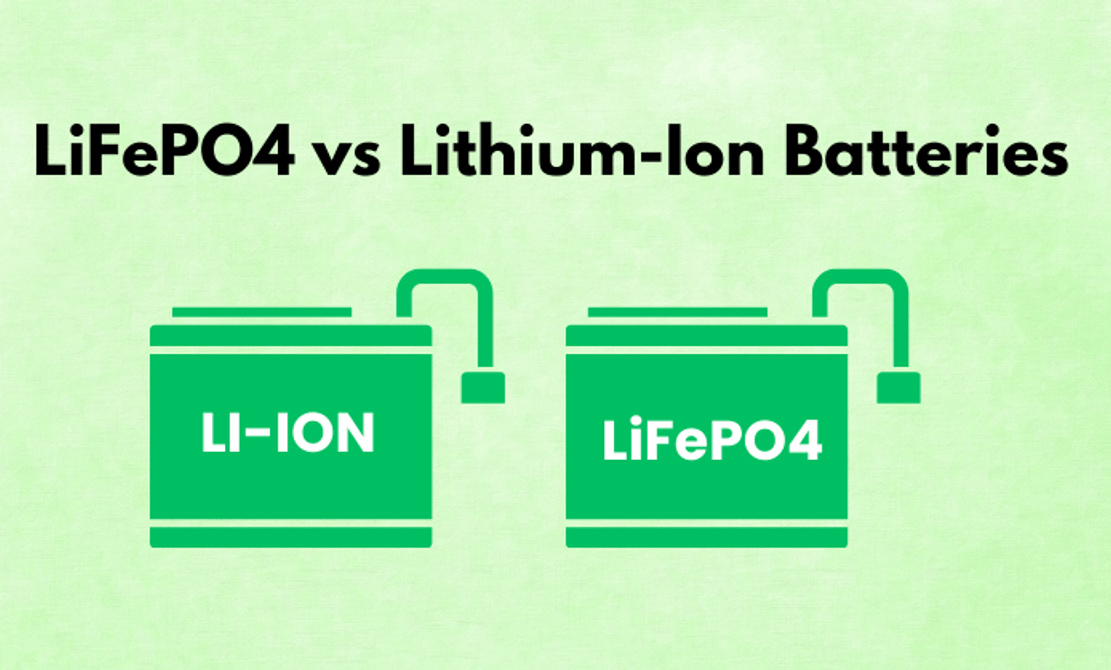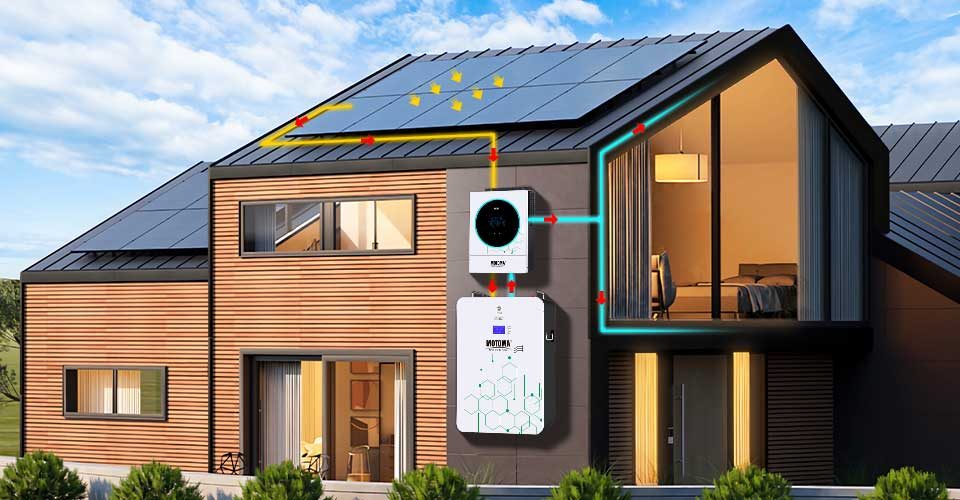As the world increasingly turns to renewable energy and electric vehicles, the demand for lithium-ion batteries has skyrocketed. These batteries power everything from electric cars to smartphones and home energy storage systems. But with multiple types of lithium batteries available, it can be difficult to determine which one is the best choice for your specific needs.
Among the most widely discussed types are lithium iron phosphate (LiFePO4) batteries, nickel-cobalt-manganese (NCM) batteries, and lithium nickel-cobalt-aluminum (NCA) batteries. Each has its unique characteristics, benefits, and drawbacks. Understanding the differences between these technologies is essential for anyone considering lithium battery options for a range of applications, whether for electric vehicles, renewable energy storage, or consumer electronics.
This article will compare LiFePO4 batteries with other popular แบตเตอรี่ลิเธียม types in terms of performance, suitability for various applications, and their potential future developments.
Understanding the Different Types of Lithium Batteries
Before diving into a comparison, it's essential to understand the three primary types of lithium batteries currently on the market:
-
Lithium Iron Phosphate (LiFePO4) Batteries: LiFePO4 batteries are known for their high safety levels, long cycle life, and thermal stability. They are widely used in applications that require stable, long-lasting power, such as electric vehicles (EVs), energy storage systems, and power tools.
-
Nickel-Cobalt-Manganese (NCM) Batteries: NCM batteries use a combination of nickel, cobalt, and manganese as their cathode material. These batteries are known for their high energy density, making them a popular choice in electric vehicles and large-scale energy storage systems. However, they tend to be more expensive due to the high cost of raw materials like cobalt.
-
Nickel-Cobalt-Aluminum (NCA) Batteries: NCA batteries, which are primarily used in high-performance electric vehicles like those made by Tesla, offer high energy density and long lifespan. They are less stable than LiFePO4 batteries but are valued for their efficiency in EVs where weight and energy density are critical factors.
Performance Comparison: Energy Density, Safety, Cycle Life, and Cost
When choosing a battery type, performance is key. Let's compare the four main metrics that influence battery selection: energy density, safety, cycle life, and cost.
1. ความหนาแน่นของพลังงาน
-
LiFePO4: LiFePO4 batteries generally have lower energy density compared to NCM and NCA batteries. While they offer more stable performance, their capacity to store energy is somewhat limited. This makes them less suitable for applications that require very high power output in a compact form, like high-performance electric vehicles.
-
NCM and NCA: Both NCM and NCA batteries have higher energy densities, which means they can store more energy in the same amount of space. This makes them ideal for applications where weight and volume are critical, such as in electric cars or drones. However, this comes at the cost of stability and thermal management.
2. ความปลอดภัย
-
LiFePO4: One of the most significant advantages of LiFePO4 is its inherent safety. These batteries are highly stable, resistant to overheating, and less prone to thermal runaway, which reduces the risk of fires and explosions. This makes LiFePO4 an excellent choice for applications where safety is paramount, such as in energy storage systems and power tools.
-
NCM and NCA: While NCM and NCA batteries have higher energy density, they are less stable compared to LiFePO4. These batteries are more prone to overheating, which can lead to thermal runaway if not properly managed. The use of these batteries in electric vehicles requires advanced thermal management systems to ensure safety.
3. วงจรชีวิต
-
LiFePO4: LiFePO4 batteries excel in terms of cycle life. They can last up to 2,000 to 3,000 cycles, which is significantly longer than NCM and NCA batteries. This makes them highly cost-effective over time, as they require fewer replacements.
-
NCM and NCA: NCM and NCA batteries typically have a shorter cycle life, around 1,000 to 1,500 cycles, before their capacity starts to degrade. While this is still respectable, it means that these batteries may need to be replaced more often than แบตเตอรี่ LiFePO4, adding to the long-term cost.
4. ค่าใช้จ่าย
-
LiFePO4: LiFePO4 batteries are generally more affordable to manufacture due to the abundance of raw materials and the lower cost of production. This makes them an attractive option for budget-conscious applications where long-term reliability and safety are more important than sheer power density.
-
NCM and NCA: The high cost of raw materials like cobalt and nickel means that NCM and NCA batteries are generally more expensive. These higher costs are offset by the higher energy density, but they still represent a significant investment, particularly in large-scale applications like electric vehicles or grid storage.
Suitable Applications for LiFePO4 Batteries
LiFePO4 batteries, with their unique blend of safety, cost-effectiveness, and long cycle life, are well-suited for a wide range of applications:
-
Electric Vehicles: While LiFePO4 batteries may not offer the same energy density as NCM and NCA batteries, they are still a viable option for electric vehicles, particularly in regions where safety and longevity are key concerns. Additionally, LiFePO4 batteries are increasingly used in low-cost electric vehicles, offering a reliable power source for daily commutes.
-
Energy Storage Systems: LiFePO4 batteries are widely used in residential and commercial energy storage systems, particularly in solar power installations. Their long lifespan and safety features make them ideal for storing renewable energy for later use.
-
Electric Tools: From power drills to lawnmowers, LiFePO4 batteries are a popular choice for electric tools. Their ability to maintain stable power output and endure long-term use without significant degradation makes them a reliable choice for these applications.
-
Marine and RV Applications: Given their durability and resistance to temperature extremes, LiFePO4 batteries are increasingly being used in marine and recreational vehicle (RV) applications. Their long lifespan and safety in challenging environments make them ideal for use in these sectors.
LiFePO4’s Advantages and Limitations
ข้อดี:
-
ความปลอดภัย: LiFePO4 batteries are the safest lithium-ion technology available, with a low risk of combustion or thermal runaway.
-
อายุยืนยาว: These batteries offer exceptional cycle life, reducing the need for frequent replacements.
-
ความคุ้มค่า: LiFePO4 batteries are cheaper to produce and maintain over their lifecycle compared to other lithium battery technologies.
Limitations:
-
Lower Energy Density: LiFePO4 batteries typically offer lower energy density than NCM and NCA, meaning they are less suitable for high-performance applications that require maximum range or power, such as high-end electric vehicles.
-
Larger Size: To compensate for the lower energy density, LiFePO4 batteries are often larger and heavier, which can be a disadvantage in applications where space and weight are critical.
The Future of LiFePO4 Batteries: Will They Surpass Other Lithium Battery Types?
While LiFePO4 batteries may not yet match the energy density of NCM and NCA batteries, their numerous advantages—safety, cycle life, cost-effectiveness—position them as a leading choice for certain applications. As innovations in materials science, battery management systems, and manufacturing processes continue to evolve, the gap in energy density between LiFePO4 and other lithium battery technologies may close, further enhancing their competitiveness.
Future developments in battery technology, such as improving the energy density of LiFePO4 through new materials or design improvements, may eventually make LiFePO4 a dominant player in a broader range of applications, including electric vehicles. However, for now, LiFePO4 remains an excellent choice for those prioritizing safety, longevity, and cost.
บทสรุป
The choice between LiFePO4 and other types of lithium batteries—such as NCM and NCA—depends largely on the specific needs of the application. LiFePO4 offers significant advantages in terms of safety, cycle life, and cost, making it ideal for applications like energy storage, electric tools, and certain electric vehicles. While it may not have the energy density of NCM and NCA batteries, its advantages make it a valuable option for long-term, cost-effective, and safe power solutions.
เกี่ยวกับ RICHYE
ริชชี่ is a professional lithium battery manufacturer that is committed to providing high-quality, reliable, and cost-effective lithium battery solutions. Specializing in LiFePO4 batteries, RICHYE delivers advanced products that combine safety, longevity, and performance. Whether for electric vehicles, energy storage systems, or industrial applications, RICHYE’s batteries are trusted by manufacturers worldwide for their exceptional quality and efficiency.




